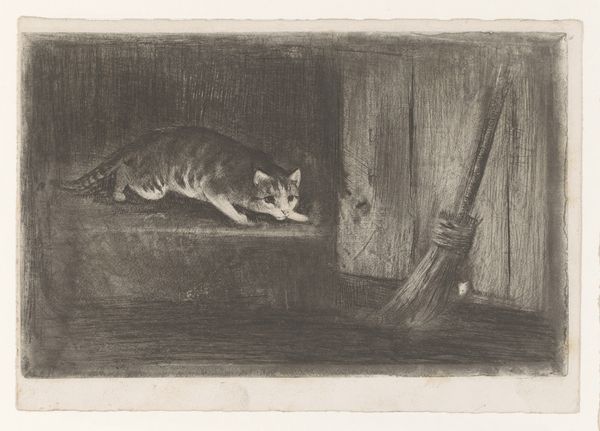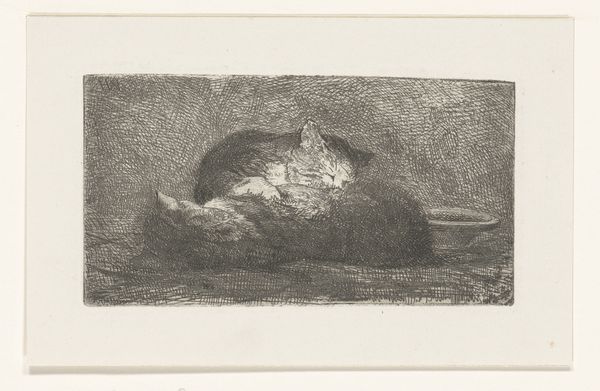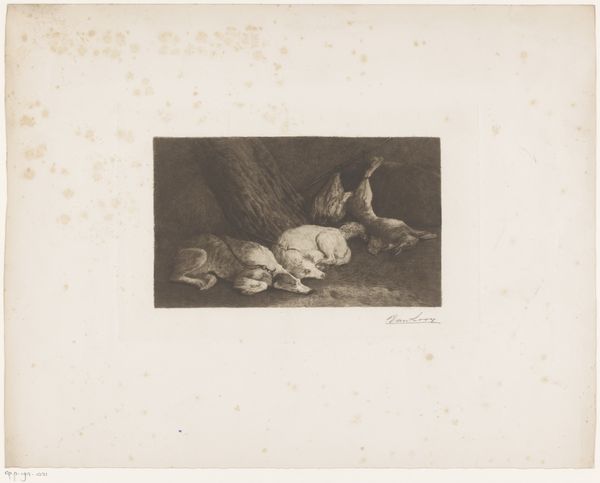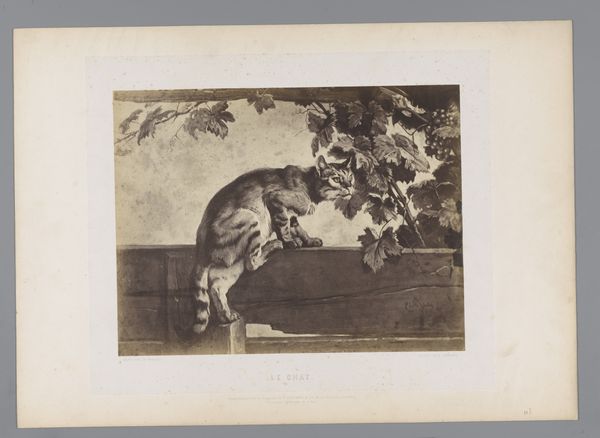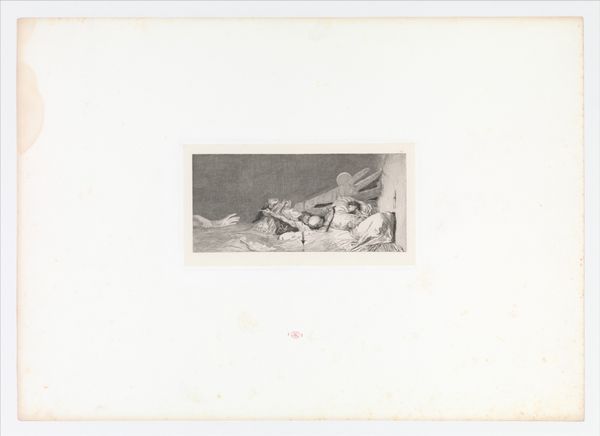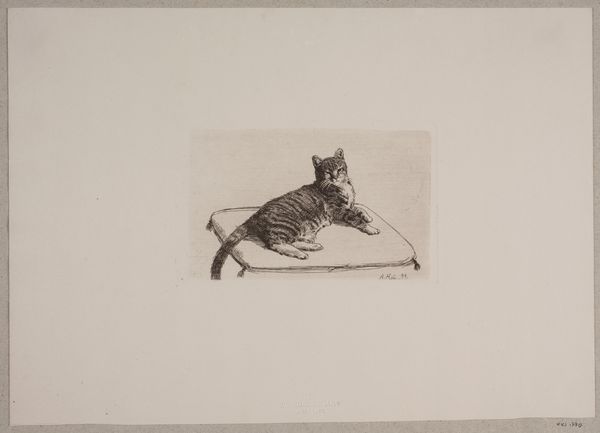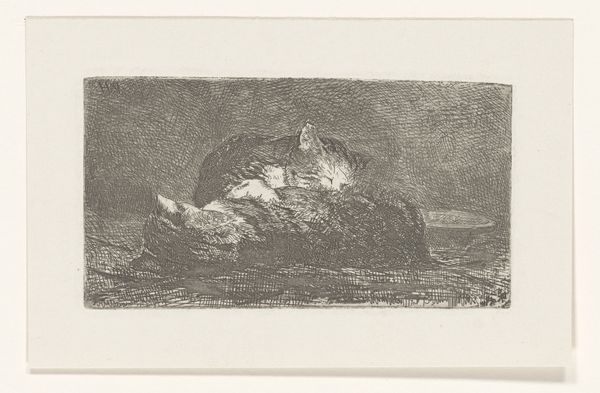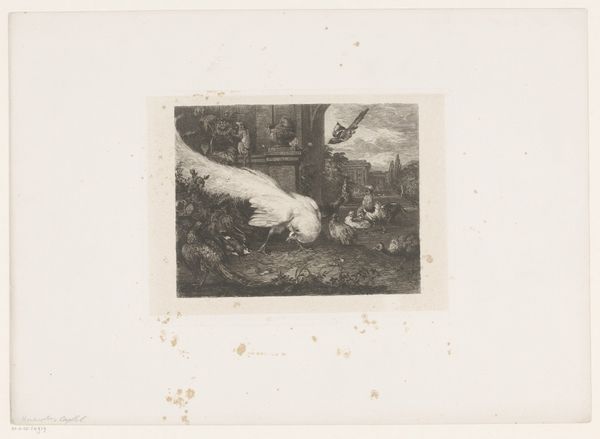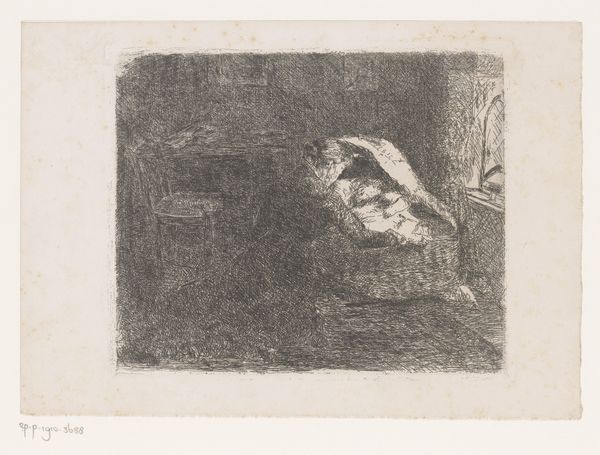
print, etching
#
animal
# print
#
etching
#
genre-painting
#
watercolor
#
realism
Dimensions: height 246 mm, width 327 mm
Copyright: Rijks Museum: Open Domain
Curator: I'm struck by the immediate tension in this piece, that palpable anticipation of the cat about to strike. Editor: Indeed. What we're observing is an etching titled "Kat en muis" – or "Cat and Mouse" in English – attributed to Charles Verlat, and created sometime between 1834 and 1890. It’s a striking example of genre-painting using realism as a primary style. Curator: The use of etching is very deliberate; it adds texture and almost mimics the roughness of a rustic setting. How would you define Verlat’s tonal distribution? Editor: Verlat masterfully directs our attention. Note how the light, particularly through his control of hatching and cross-hatching, spotlights the crouching cat, drawing our gaze inexorably towards its focused stare. The strategic use of shadow, particularly in the shadowed backdrop, accentuates the dramatic anticipation of a life and death struggle. It feels less about high art, and more connected to everyday labor in the household. Curator: The positioning is noteworthy as well. See how the broom leaning against the wall, usually an item of labor and servitude, becomes another spectator of nature's brutality here? It serves as a mute testament of mundane order bordering chaos in a corner. Editor: Precisely, it brings another visual line that underscores a subtle triangle made by the corner edges pointing straight at the mouse’s possible escape point. Do you find the scale somehow subverts what one might expect given its intimate subject? Curator: It's definitely playing with contrasts - a tiny moment stretched onto this wider print feels almost symbolic of larger societal imbalances. The limited tonal range and stark scene of primal predatory behavior really highlight this domestic drama's harsh realities. Editor: Absolutely. It provides depth in a deceptively still slice of life. The work's very essence prompts consideration beyond form and image, and toward an almost sociological perspective, showing an actual world, or one as it really could be. Curator: Seeing Verlat use such refined skills and methods of high art printmaking to immortalize such a familiar scene makes you think about all that hides under what may be considered art and what is regarded just as craft or even common life. Editor: Ultimately, this prompts further reflections on how our interaction shapes the artistic production – it is less of a ‘who’ and ‘what’ than a profound exploration of the 'how.'
Comments
No comments
Be the first to comment and join the conversation on the ultimate creative platform.
